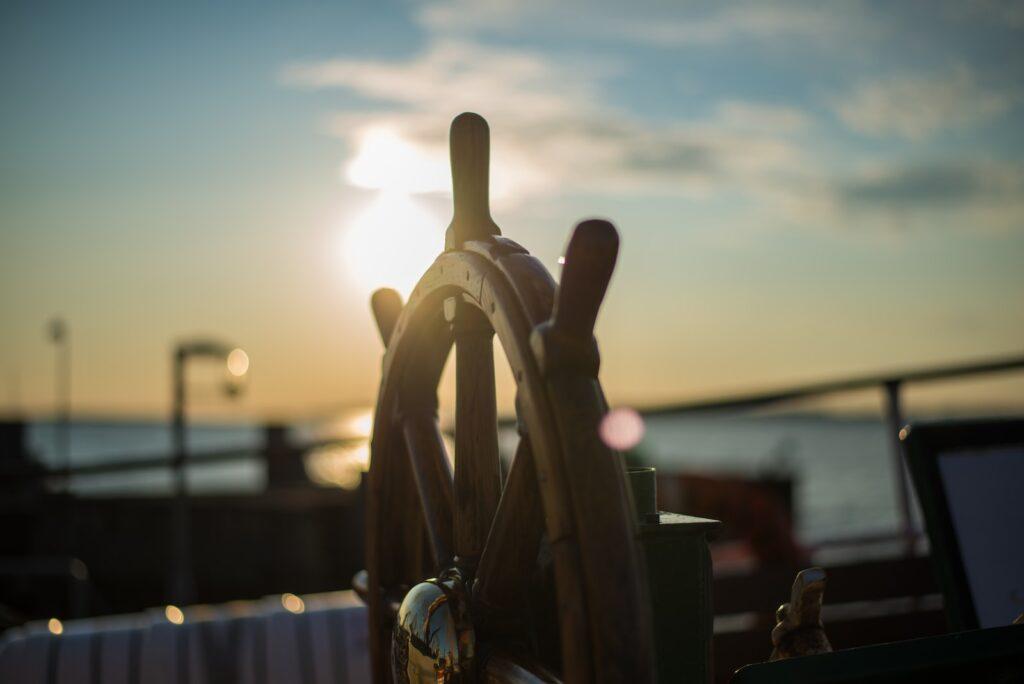How to Strap Lily Pad to Boat
Key Takeaways:
- When securing a Lily Pad to a boat, one should use the tether or a sturdy marine-grade rope, attaching it to a solid anchor point on the boat such as a cleat or grab handle. The other end of the tether or rope should be fastened to the built-in grommets on the Lily Pad, ensuring a secure attachment that won’t drift away or cause unexpected mishaps while out on the water.
- The positioning of the Lily Pad is crucial for safety and convenience. The chosen spot should allow enough room for passengers to move around, and it should be close enough for supervision but far enough to avoid bumping into the boat. Other factors to consider include water depth, current and wind conditions, and potential boat traffic in the area.
- Attachments like the pad-eye, straps, bungee cords, and rope should be securely fixed and tightened to keep the Lily Pad in place. Once all these steps are completed, it’s crucial to test the Lily Pad’s security to ensure that all elements are correctly installed and adjusted as needed. This guarantees that the Lily Pad remains stable during use and ensures the safety and enjoyment of those onboard.
Taming the Lily Pad might sound like something out of a fairytale, but if you’re a boat owner, you know it’s a completely practical skill. Whether you’re chilling at the lake or trying to keep the kids entertained, strapping a Lily Pad to your boat is a genius way to expand your floating playground.
How to Strap Lily Pad to Boat — 101 Guide
You need to locate the tether included with your Lily Pad. It’s this nifty little thing that will let you secure the pad to your boat. If your Lily Pad didn’t come with one, no sweat – a sturdy rope can do the job just fine.
- Locate the Tether or Rope: Find the tether that came with your Lily Pad. If it didn’t come with one, a sturdy rope will work just fine.
- Identify the Anchor Point: Find a solid anchor point on your boat. This could be a cleat, grab handle, or another sturdy point.
- Tie the Tether or Rope: Pass one end of the tether or rope through the anchor point on your boat. Securely tie a knot.
- Attach to the Lily Pad: Attach the other end of the tether or rope to your Lily Pad. Most Lily Pads have built-in grommets specifically for this purpose.
- Securely Fasten: Give a firm tug on the tether or rope to ensure that it’s secure. You don’t want any surprises once you’re out on the water!
Find the anchor point on your boat. It could be a cleat, a grab handle, or any solid point really. Pass one end of the tether or rope through this point and tie a secure knot. Remember those boy scout lessons? Now’s the time to use ’em.
Attach the other end of the tether to your Lily Pad. Most Lily Pads come with built-in grommets for this very purpose. So, just thread the rope through the grommet, and you’re almost set.

If you are planning to strap a lily pad to your boat for the purpose of providing shade, stability, or just for fun, you can do so with a few simple steps. Start by measuring the surface of your boat where you plan to attach the lily pad. Cut the straps to the appropriate length and secure them to the boat with screws. After that, place the lily pad onto the boat, making sure it is centered and secure. Use the straps to secure the lily pad to the boat. Make sure the straps are tight so the lily pad does not move or slide around. Once you have finished strapping the lily pad to your boat, you should be good to go.
Things you will need
You will need a lily pad, a strap, and some type of fastener (such as a buckle or clamp). You will also need a way to attach the strap to the boat (such as rope or bungee cords). Once all of these items are gathered, you can begin to attach the lily pad to the boat. Start by wrapping the strap around the lily pad and securing it with the fastener. Then, attach the other end of the strap to the boat using the rope or bungee cords.
Before you begin, you’ll need to gather the following items:
- A sturdy rope: Something in the ballpark of 10–15 feet should suffice, depending on how far from the boat you want the Lily Pad to float. Make sure it’s marine-grade, so it can withstand water and sun exposure.
- Bungee cords: These will help you to secure the Lily Pad when it’s rolled up, either for storage or transportation.
- Boat cleat: This is a type of fitting found on the deck of boats to which ropes are tied. You’ll be tying one end of your rope to a cleat on your boat and the other end to the Lily Pad.
- Your trusty Lily Pad mat: Of course, none of this would make sense without the star of the show, your mat. It should have built-in grommets for easy attachment.
The first thing is, of course, the Lily Pad. Make sure it’s not damaged or punctured to avoid any mid-water mishaps. Next up is a good quality marine-grade rope. This will be used to secure the Lily Pad to your boat. I would recommend a rope that’s around 10 to 12 feet long — this gives the Lily Pad enough room to move freely without drifting too far from the boat.
You also need to find a sturdy attachment point on your boat — most boats have cleats that you can use for this purpose. And finally, you’ll need a pair of hands (yours will do just fine!) and a bit of patience. Tying knots and ensuring everything is secured might take a few tries
Choose the Location for Your Lily Pad

You’ll want to choose a spot that’s comfortable for your passengers and provides enough room for them to move around. It’s important to take into account the size of your lily pad when selecting a location. Make sure the lily pad fits securely and doesn’t interfere with the operation of the boat.
- Proximity to the boat: Choose a location that’s close enough for easy supervision, but far enough to prevent the Lily Pad from bumping into the boat.
- Water depth: Make sure the water is deep enough for safe jumping and diving, but not too deep for those who aren’t confident swimmers.
- Current and wind conditions: Avoid areas with strong current or winds which might drift the Lily Pad away from the boat.
- Traffic: Stay clear of busy areas. You wouldn’t want other boats or jet skis passing too close to your Lily Pad.
- Sun exposure: While sunshine is great, too much can be harmful. If possible, choose a location where there is some shade, especially during peak sun hours.
The best location for your lily pad will depend on several factors. Consider the amount of sunlight and water your lily pad needs to thrive, as well as your climate. You may want to consider the size of the lily pad and the size of the pond or body of water it will be placed in. You may also want to consider any potential predators in the area that could harm the lily pad, such as fish or other aquatic creatures. Once you have an idea of the ideal location, you can begin to plan and prepare the area for the lily pad.
Attach the Pad-Eye
Once you’ve chosen the location for your lily pad, the next step is to attach the pad-eye. This is a small metal loop that’s used to attach the lily pad to the boat. Use the screws included in the package to securely attach the pad-eye to the boat. Make sure the pad-eye is positioned correctly so the lily pad will fit securely.
Attach the Straps
The next step is to attach the straps to the pad-eye. You can either use the straps that come with the lily pad, or you can purchase straps separately. If you’re using separate straps, make sure they are strong enough to support the weight of the lily pad. Attach the straps to the pad-eye using the D‑rings provided.
Attach the Bungee Cords
The next step is to attach the bungee cords to the straps. The bungee cords are used to keep the lily pad in place and provide extra support. The bungee cords should be long enough to stretch from the straps to the sides of the boat. Attach the bungee cords to the straps using the D‑rings provided.
Attach the Rope
The next step is to attach the rope to the bungee cords. This is used to secure the lily pad to the boat. Make sure the rope is long enough to reach the sides of the boat. Attach the rope to the bungee cords using the D‑rings provided.
Tighten the Straps
Once the straps, bungee cords, and rope are attached, the next step is to tighten them. Use a ratchet to tighten the straps and secure the lily pad to the boat. Make sure the straps and rope are tight enough to keep the lily pad in Test the Lily Pad
Once you’ve secured the lily pad to the boat, the next step is to test it out. Get in the boat and make sure the lily pad is secure. If the lily pad is not secure, go back and adjust the straps, bungee cords, and rope as needed.
How to attach floating mat to boat
Locate the built-in grommets or loops on the floating mat. These are designed specifically for tying the mat to your boat. Grab your rope and thread one end through the grommet.
Find a sturdy cleat on your boat. It’s typically on the side or the rear of the boat. Take the other end of the rope and make a loop. Pass this loop over the cleat and pull it tight. You’re essentially tying a cleat hitch, which is one of the most secure boat knots.
Keep the rope length just right. Too short, and the mat might rub against the boat. Too long, and the mat might drift too far, especially in windy conditions.
How do you secure a floating mat on a boat

To secure a floating mat on a boat, you need to tie it down with ropes or bungee cords. Make sure to attach the ropes or cords to solid points on the boat so the mat won’t move around. You can also use anchors or sand bags to keep the mat in place.
If you are using a floating mat on the water, it is important to take extra precautions to ensure it is secure. Use extra ropes or bungee cords and tie them to the cleats or other secure points on the boat.
How much weight can a lily pad hold
The amount of weight a lily pad is able to hold depends on the size and type of lily pad, as well as the size of the animal or object being placed on the lily pad. Lily pads are able to hold small animals, such as frogs, up to several pounds in weight. The strength of lily pads is also affected by their environment. If a lily pad is submerged in water, it will be able to support more weight than a lily pad that is exposed to air.
The exact amount of weight that a lily pad can hold depends on several factors, such as the size and species of the lily pad, the water temperature, and the amount of water pressure. Generally, a lily pad can hold the weight of a small bird or insect without breaking.
How do you make lily pads float
To make lily pads float, you will need some material that is both light and buoyant, such as styrofoam, cork, or even a sealed plastic bag filled with air. Then, take a sheet of the material and cut it into a lily pad shape. Attach a string or piece of ribbon to the lily pad in order to hold it in place in the water and keep it from sinking.
You can use green acrylic paint to create the pattern of leaves on the lily pad and add some white paint to give it a realistic look. You can use glue to attach artificial flowers or other decorations to the lily pad. With this method, you can create a realistic looking lily pad that will float on the water.
FAQs
Can I leave my Lily Pad strapped to my boat when moving?
While it might be tempting to keep it strapped on, it’s generally not a good idea. The Lily Pad could be damaged due to waves, wind, or even the boat’s propellers. Always unstrap and stow it away properly when you’re on the move.
How can I stop my Lily Pad from drifting too far from my boat?
That’s where the length of your rope comes in. You’ll want a rope that’s long enough to allow for some movement, but not so long that the Lily Pad can drift away. Around 10–12 feet is usually a good starting point, but adjust as necessary based on your specific conditions.
What type of knot should I use to secure my Lily Pad to my boat?
A cleat hitch is one of the most common and secure knots for this purpose. It’s fairly easy to tie and untie, and it holds well under tension. Always double-check your knots before letting anyone onto the Lily Pad.
Wrap up
Straping a lily pad to your boat is an easy process that requires just a few simple steps. Start by choosing the location for your lily pad. Then attach the pad-eye, straps, bungee cords, and rope. Make sure the straps and rope are tight enough to keep the lily pad secure. Once the lily pad is securely attached to the boat, you’re ready to relax and enjoy your lily pad.
